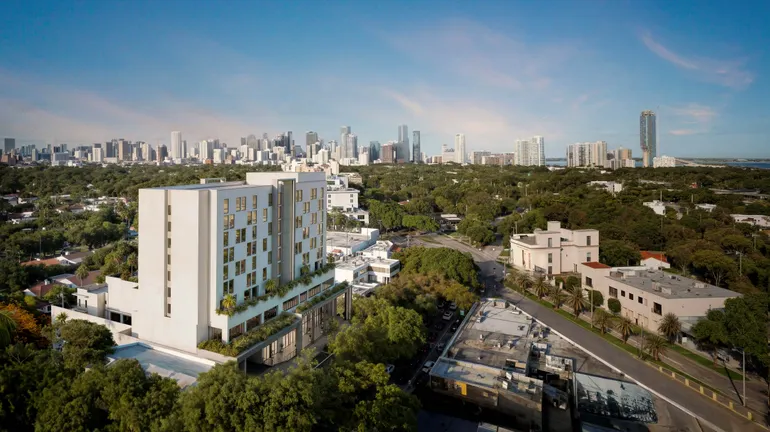South Florida Real Estate Market: Challenges and Opportunities Amid Rising Costs and Interest Rates
South Florida’s real estate sector has historically been characterized by its volatile boom-or-bust cycles. From the early 2000s condominium boom to the post-recession slump, the region has experienced fluctuations driven by economic factors and market demand. However, recent migration trends and shifting economic conditions are reshaping the landscape, presenting both opportunities and new challenges for developers and investors.
Migration Boosts Demand but Market Faces Near-Term Pressure
The COVID-19 pandemic accelerated migration to South Florida, especially from the Northeast United States. This influx has infused the market with fresh capital and demand for residential projects. Rene Bello, Principal at Miami-based real estate development and investment company BLDG Ventures, underscores the sustained momentum:
"We’re still seeing a ton of folks moving down to South Florida. We’re getting the benefit of migration from the Northeast. That capital migration is still strong."
Despite this positive trend, the market is grappling with an unusual dynamic: a recent surge in rents followed by a wave of concessions as rents normalize.
“We saw this spike in rents six to 12 months back,” Bello explains, “that was not sustainable.”
[link-whisper-related-posts]
Current Market Dynamics
- Rents: Experienced a peak followed by a softening and increased concessions to attract tenants.
- Vacancies: Rise is leading developers to be more cautious with new projects.
- Market Type: Rather than a traditional bust, South Florida is witnessing a temporary cooling period.
Labor Market Tightness and Cost Pressures
The labor market in South Florida’s construction sector has become increasingly competitive, impacting bidding and project costs:
- In 2020-2021, trades like flooring, electrical, and concrete saw 10-15 bidders per contract.
- Today, bids have dropped to 5-8 due to labor shortages and increased operational costs.
Bello highlights the complexity:
“Back in 2020 and 2021… Now, as labor markets are tightening and costs have increased, it’s becoming increasingly competitive.”
Rising Land Costs and Insurance Premiums: A Growing Concern
Developers face steep escalations in land acquisition prices and insurance premiums, which directly influence project feasibility and underwriting standards.
- Land Costs: Remain elevated despite the recent easing of rents.
- Insurance Premiums: Increasing annually by 15-20%, influenced by climate sensitivity and risk.
- Impact: Higher operating costs make it more difficult to justify new developments financially.
Financing Challenges Amid Elevated Interest Rates
The current interest rate environment is significantly affecting multifamily real estate financing:
- Interest Rates: High rates are constraining the ability to "pencil out" new multifamily projects.
- Refinancing Activity: Increased as owners seek to rollover debt in anticipation of lower future rates.
- Development Delays: Lead times extended due to a cautious approach from both lenders and developers.
Bello observes:
“Multifamily is tough to pencil out today because of the interest rate environment… Hopefully, on the back end, in Q3 or Q4, we should see some compression on those interest rates, which would free up a ton of capital.”
For developers to succeed, projects must now be grounded in strong fundamentals, particularly concerning land acquisition:
“What I’m hearing from our lenders is that multifamily has got to make a lot of sense. You’ve got to really have a good basis in the land now.”
Market Outlook: Anticipating Interest Rate Declines and Capital Influx
Should interest rates decline in the second half of the year, the multifamily market is expected to experience a surge in refinancing and new investment activities, particularly within the middle market sector.
- Middle Market Size: Redefined from $10-$20 million to now approximately $50-$100 million.
- Large Market: Projects exceeding $100 million or 300+ units may see rolling debt maturities and refinancings.
- Capital Activity: Anticipated flurry of refinancing for land acquisitions and stabilized assets.
Segment-Specific Activity: Low-Income and Workforce Housing
One bright spot amid overall market tightening is the increased activity in affordable housing developments, spurred by government subsidies such as the Low-Income Housing Tax Credit (LIHTC). This segment offers viable investment opportunities due to:
- Subsidies reducing financial risk.
- Strong demand for workforce housing in South Florida.
- Alignment with social housing initiatives.
Spotlight: BLDG Ventures’ Latest Development – Atelier Residences
BLDG Ventures remains active in this complex market with its 148-unit mixed-use development, Atelier Residences, located in Miami. The project features:
- 15,000 square feet of amenity space, including ground-floor restaurants, pool, gym, spa, and sauna.
- Designed to meet the lifestyle expectations typical of the South Florida market.
This project showcases how developers seek to blend experiential living spaces with market realities, adapting to changing consumer demands.
Key Takeaways for South Florida Real Estate Stakeholders
- Migration continues to drive demand despite rent normalization.
- Labor market constraints and rising costs are intensifying competitive pressures.
- Elevated insurance premiums and land prices challenge development feasibility.
- Multifamily financing is cautious, awaiting interest rate relief.
- Affordable and workforce housing are attractive niches due to subsidies.
- Refinancing activity is a critical factor in project timelines and capital availability.
For ongoing updates on multifamily housing trends and real estate development news, subscribe to industry newsletters and explore reports on local market dynamics.
By understanding these evolving factors, real estate investors, developers, and stakeholders can navigate South Florida’s complex market conditions with greater insight and strategic agility.


